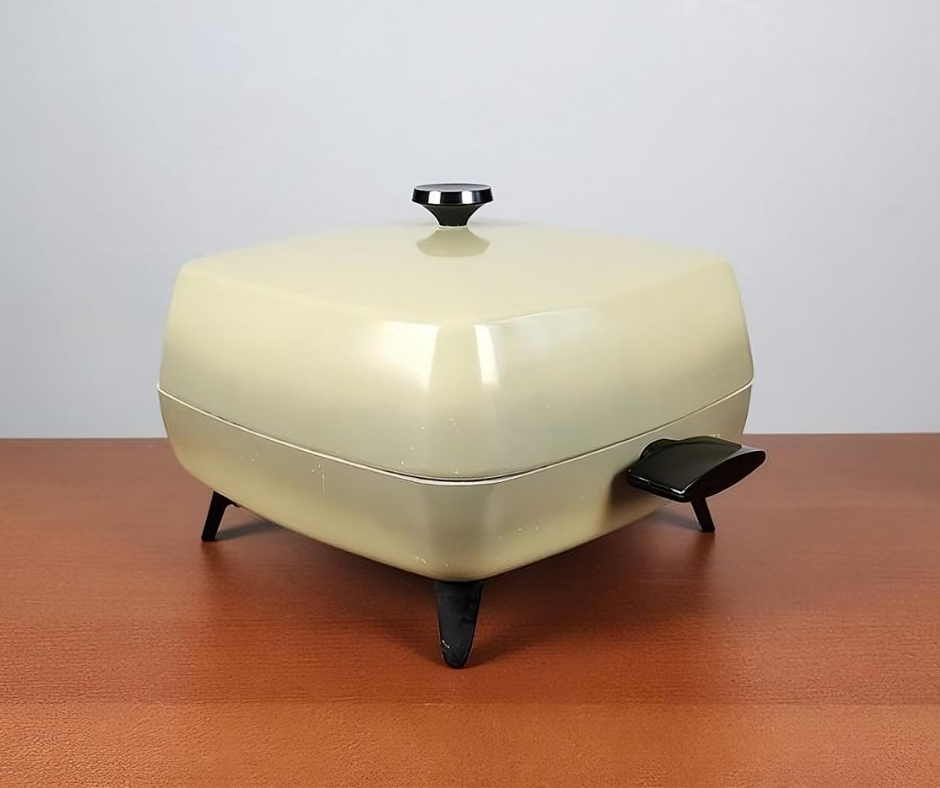The vintage nonstick electric skillet represents a remarkable evolution in kitchen technology, revolutionizing the way we approach meal preparation. This remarkable appliance, which gained popularity in the mid-20th century, not only changed the culinary landscape but also reflected the changing domestic lifestyles of that era.
The introduction of electric cooking appliances in the early 20th century marked a significant shift in the way people approached home cooking. The electric skillet, in particular, emerged as a versatile tool that combined the convenience of electric heating with the familiarity of a traditional skillet. Early models were often made of cast iron or aluminum and were manually controlled, paving the way for the technological advancements to come.
The 1950s saw the introduction of a revolutionary innovation in the world of cooking – Teflon. This nonstick coating drastically reduced the need for cooking oils and made cleaning a breeze. Electric skillets quickly adopted this technology, offering home cooks a more efficient and user-friendly cooking experience.

Vintage nonstick electric skillets were incredibly versatile, suitable for a wide range of cooking tasks. From frying and sautéing to simmering and even baking, these skillets could handle it all with ease. Their adjustable temperature controls allowed for precise cooking, making them ideal for a variety of recipes – from breakfast pancakes to dinner stir-fries.
The electric skillet’s portability and consistent heating made it a popular choice for buffet-style serving at parties and family gatherings. Many models came with detachable cords, allowing for easy transportation and direct use on the dining table, keeping food warm throughout the meal.
The nonstick surface of vintage electric skillets reduced the need for excessive cooking fats, promoting healthier cooking practices. This feature aligned with the growing awareness of diet and nutrition in the 1960s and 1970s, appealing to health-conscious consumers.
The success and popularity of vintage nonstick electric skillets paved the way for modern electric cooking appliances. Contemporary electric skillets and griddles still draw inspiration from their vintage predecessors, incorporating advanced features like digital temperature controls and improved nonstick coatings.
Today, vintage nonstick electric skillets are highly sought after by collectors and cooking enthusiasts. Their retro design, durable construction, and practical functionality make them valuable artifacts from a bygone era. Models from renowned brands like Sunbeam, Presto, and West Bend often fetch high prices in antique shops and online marketplaces.
The vintage nonstick electric skillet stands as a testament to mid-20th century innovation in kitchen appliances. Its history, versatility, and lasting impact highlight the significant advancements in home cooking technology. Whether used for their intended culinary purposes or collected as nostalgic artifacts, these skillets continue to be celebrated for their role in shaping modern cooking practices.
The vintage nonstick electric skillet represents a significant milestone in the evolution of kitchen technology. From its humble beginnings as a manually controlled appliance to its widespread adoption and enduring legacy, this versatile cooking tool has left an indelible mark on the way we approach meal preparation. As we look back on the history of this culinary marvel, we can appreciate the ingenuity and innovation that paved the way for the modern cooking appliances we enjoy today.


